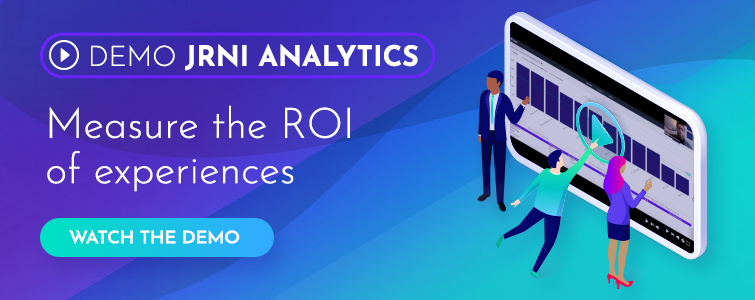It’s no question that optimizing your workforce can have a major positive impact on your business outcomes. Improving employee efficiency and productivity is a key part of this, and one way major retailers and financial institutions are seeing increased customer satisfaction and loyalty is by getting insight into appointment capacity data on a daily, weekly, monthly, and seasonal basis. By looking at real-time capacity analytics data, you can manage the ebbs and flows of your business to optimize operational efficiency, improve the customer experience, and ensure your appointments strategy is up to par.
Optimize employee efficiency
To maximize employee productivity, evaluating capacity data will help you make more informed decisions. Capacity reporting can illuminate which locations are overstaffed and which locations are understaffed - and work toward a better balance across all locations. It’s about surfacing the overall trends to drive improvements in efficiency. Some questions to consider include:
How much bookable time is available on each employee’s calendar - per day, per week, per month?
Which locations are booked the most?
Which employees are booked the most?
Are your locations properly staffed to handle the types of appointments scheduled?
Are you tracking capacity thresholds to ensure maximum efficiency?
Are your locations staffed to effectively manage ebbs and flows?
There are many things to examine, but ideally, setting capacity thresholds will ensure your business is meeting this standard. An additional consideration for banks and credit unions is having an appointment booking solution that syncs to employees' Outlook Exchange calendars to ensure there is up-to-date information when customers book, cancel, or reschedule appointments. After all, we know that pre-booked appointments tend to lead to more accounts opened and more balances gained. So if you work at your bank or credit union, then a seamless calendar sync is crucial in order to accurately analyze employee availability.
Improve the customer experience
It’s an on-demand world, and when customers book an appointment, they expect to be able to book within days - even hours. Plus, once they arrive for their appointment, there’s nothing more frustrating for a customer than having to wait to be seen for that pre-booked appointment - even if just for a few minutes. To prevent long lead and wait times, analyze your capacity data to ensure you are properly staffed across your business.
By having enough employees on hand, and enough employees with the right expertise, you can improve the customer experience, and help your employees feel more prepared to manage their customer appointments. Things to consider:
Do you have enough experienced employees on hand to meet with customers during busier times?
What is the average lead time for your appointments? What is the lead time per appointment type?
How long do customers with a pre-booked appointment have to wait before meeting with an employee?
How can you prepare for busier times in the future to minimize wait time and improve the customer experience?
As important as capacity data is for employee efficiency, it also plays a huge role in customer satisfaction and their perception of your business.
Prepare for seasonal trends
Capacity reporting can also help you prepare for seasonal trends throughout the year. By honing in on these trends, you can identify low-performing and high-performing times throughout the year using date comparisons and ensure you have enough employees scheduled to meet demand during peak periods.
In the retail industry, many companies have seasonal trends they need to plan for. Whether related to the upcoming holiday shopping season, wedding season, or a personal shopping consultation for a spring wardrobe refresh, retailers can use capacity data to ensure they are available to meet all of their customers’ needs during busier times.
Similarly, banks and credit unions also see trends throughout the year. For example, many banks used to see lunchtime rushes across branches - although that has changed since COVID-19. Bankers and credit unions should reevaluate the heavily trafficked times and use capacity data to meet new demand.
Here are some questions to consider for identified seasonal trends:
Were you properly staffed for the increase in certain appointment types?
Did you have enough qualified employees available to meet the demand for specific appointment types?
How can you reallocate employees across locations to meet demand?
What can you do better next time to be fully prepared for this trend?
Leveraging seasonal trends is key to ensure you’re offering the right services at the right time, and to ensure your employees are prepared for the increase in appointments.
Capacity reporting with JRNI
At JRNI, our industry-leading analytics tool provides employee optimization data so you can improve planning at the individual location, regional, and employee level. JRNI Analytics comes with easy-to-understand dashboards and reports out of the box, giving your teams a simple way to start measuring the success of your appointments strategy right away.
With real-time capacity data, our Capacity / Lead Time Dashboard shows you the capacity of your employees, as well as how long it takes for a customer to book an appointment in advance. Pair this with our Appointments Dashboard, and you’ll get an easy-to-digest overview of your appointment bookings and can quickly apply filters to see data at the store or branch level.
Additionally, your teams can set up thresholds on your capacity reporting. You can alter this based on risk tolerance, and continue to monitor and edit as needed to ensure optimal efficiency. This threshold customization ensures that our capacity reports are working for your unique business - and empowering you and your teams to make the best decisions.
Want to learn more about the power of data and how JRNI Analytics can help you optimize employee efficiency? Then download a demo of JRNI Analytics to learn more!

Or if you’re ready to learn more about how we can help you deliver exceptional experiences at scale (and easily measure success), then be sure to sign up to speak to an expert!



